Yet Brazil’s advance looks tepid amid global rally
02/01/2023
/i.s3.glbimg.com/v1/AUTH_37554604729d4b2f9f3eb9ad8a691345/internal_photos/bs/2022/V/q/2pBC5wRgAwB7eH9JPfig/acoes-bolsa-divulgacao-b3.png)
Brazil’s benchmark stock index Ibovespa gained 3.4% over the month influenced by the upward movement of international stock markets — Foto: Divulgação/B3
Given the turmoil investors faced at the beginning of 2023, January was a good month for risk assets. Driven by foreign capital, the stock market rose, and the dollar fell against the real. In fixed income, with signs of inflation under relative control, intermediate interest rates gave way, with capital gains for investors holding federal government bonds maturing in up to five years. More than that, it had an impact.
Brazil, under the new leadership of President Luiz Inácio Lula da Silva, saw its democratic institutions attacked by the invasion of the halls of power by extremist supporters of former President Jair Bolsonaro on January 8. A few days later, accounting inconsistencies revealed by Americanas and the retail giant’s request for court-supervised reorganization sent the debt and equity markets into a tailspin.
Despite all this, Brazil’s benchmark stock index Ibovespa gained 3.4% over the month influenced by the upward movement of international stock markets. The real estate stock index gained 7.1% and the dividend index gained 5.9%. The exchange rate fell by 3.9%. These movements are related to the arrival of foreign investors in Brazil, which has a premium over developed and other emerging countries.
The IMA-B 5, which represents a basket of National Treasury Notes Series B (NTN-B or Tesouro IPCA+), rose 1.4%. With yields above 6% per year and adjusted for Brazil’s official inflation index IPCA, the perception is that they have a good yield if the Brazilian economy does not collapse.
January was marked by a return to risk in global markets on news that the United States Federal Reserve (Fed) was close to ending the process of raising interest rates. But Brazil was a lukewarm participant in that move, said Luciano Telo, Credit Suisse’s chief investment officer for Latin America.
“The [U.S.] Federal Reserve, in a softer way, implemented what the markets were imagining: two more rate hikes and the cycle is over. That was the cue to reduce uncertainty and bring liquidity to risk assets,” he said. “Brazil caught the tailwind through the exchange rate, with the appreciation of the real, but what could have been a bigger rally in the equity market and fixed income was less so compared to some emerging market peers.”
In the executive’s view, the Fed meeting this Wednesday will be important to signal the end of interest rate hikes, but he thinks that by March the U.S. central bank is likely to send a message to correct the excessive optimism of financial agents. This has been reflected in interest rates which are already pointing to a possible cut at the end of the year.
Credit Suisse expects the hikes to be completed with benchmark rates at 5% per year. “We have not added risk in a relevant way, we will assess the reaction outside. But the good news is that 2023 will be the first year in three that the Fed will not have another interest rate hike to get in the way.”
Mr. Telo believes that the Brazilian market has not taken full advantage of the tailwinds because, at the beginning of this administration, it is still not possible to know what the long-term fiscal project will be. The election of congressional leaders are still pending. The plan to balance the public debt will not be presented until April.
He mentions that long inflation-linked bonds have even seen their premiums rise. “The market doesn’t like uncertainty and discounts it in the price. We stayed more in the shorter [maturities] because we were anticipating this lack of fiscal definition. It is normal for the government not to give a signal before Congress is in place.” He said that’s why the shorter NTN-Bs have performed relatively well, but the longer ones are now trading at higher rates.
The executive says that in Brazil it has become more difficult to forecast Selic cuts and while this is not possible, the options for the first half of 2023 are to have fewer positions in the equity market and a little more in fixed income, in addition to increasing the share in hedge funds. “The premiums in fixed income are relatively high, and to have an advantage in the equity market, you need to have some resolution on interest rates, a little more tangible horizon with a fiscal framework, and inflation meeting [the targets].”
Credit Suisse, in its strategies designed for Brazilian investors, typically holds global equity markets including in the real-denominated portfolios, but Mr. Telo says that last year this position was reduced to virtually zero and that he believes it early to include this class. “You have to get closer to a recession, with the revision of corporate earnings growth abroad, to have a more assertive allocation,” he said.
For now, his team is working on the assumption of a slight slowdown in the U.S. economy. “We have been waiting, diluting the risk a little and taking advantage of the higher interest rates in Brazil to stay in the CDI,” he said, using the acronym for the interbank deposit rate, a benchmark for the profitability of investments in the country. “Although it is an excellent long-term option, we are in an unusually low position. It is a period of a little more patience for the trajectory of interest rates [in the United States] to get more into the share price.”
As much as 2023 is under the threat of a global recession, assets will not necessarily correlate with the pace of GDP, said Eduardo Ventura, head of Citi’s private banking in Brazil. He points out that there are high-quality bonds paying good rates, far from the zero real interest seen before the pandemic, and that in the equity market there are several poorly valued stocks. “In terms of allocation, it looks very favorable for the saver to get returns without taking so much risk.”
In Brazil, although local financial players are cautious because of the indefinite nature of the public debt, high interest rates have balanced the game and ensured the presence of foreign capital. This has affected the exchange rate and equities, said Rafael Bisinha, Citi’s local markets specialist. “If there is not a complete collapse, the high rates compensate for the risk,” he said. “Foreigners look at this and see that the current account data is good and the debt, while not good, has been stable compared to other emerging markets. It even has relatively good growth in 2022 and the unemployment rate is low.”
While other markets such as Turkey, China, and Russia have fallen off the radar, Brazil is emerging with relative prominence and there is goodwill towards local assets, Mr. Bisinha continues. But that could change if the government fails to do its homework. “The feeling is that if it is an economic policy with a more massive presence of the state, and if the capital allocation of the past is any guide, the prognosis is not good,” he said.
If the choice is a higher level of debt, so that the debt does not explode, in Mr. Bisinha’s view, the way out may be a greater tolerance of inflation, closing the gap with tax increases. “If this is the possible balance, you have to prioritize domestic inflation-indexed investments in the medium and long term.”
For the Citi executive, investors should not be completely out of the equity market in this scenario. He mentions that companies focused on the foreign sector tend to outperform. Hedge funds, which have the agility to turn the risk key, are another class to bet on. “The investor can take advantage of the high level of the real interest rates to preserve his assets and delegate the active management to the funds, the professional will be able to change the call quickly,” says Mr. Ventura.
Investing part of the funds in other locations is still on the risk distribution map, and even families with a more conservative profile have paid attention to international diversification. “Nobody is complaining about a return in dollars plus 7% to 8%,” says Mr. Ventura.
At the prices stocks are trading today, you have to be invested in a stock exchange in Brazil, says Rodrigo Éboli, a portfolio manager at Brainvest. “You have to calibrate the size, but with the higher opportunity cost you have to have more fixed income anyway.”
He says the firm has been reducing the risk of its clients’ portfolios since October, but with a slightly larger allocation in hedge funds so as not to be completely left out of the party. In fixed income, it has already reduced what it had in the longer term, preferring, for example, the NTN-B maturing in 2024.
Brazil is an integral part of the main mandates of international investors, said Fernando Cortez, head of distribution at the asset manager Schroders in Brazil. “Without a doubt, if there is a movement of diversification to emerging markets, whether in debt or equity, Brazil will attract funds,” he says, adding that although it is a moment of uncertainty and volatility that will continue in the coming months, from a valuation point of view, the market is attractive.
He cites that, in terms of variable income, the stocks that make up the Ibovespa are trading with a price/earnings ratio of six to seven times, one of the lowest in the historical series, with a return in dividends of around 12%. “When you put that into the quantitative allocation models versus other emerging markets, Brazil is in a good position.”
Through January 26, foreigners had injected a net R$9.92 billion into the B3’s secondary market. By 2022, foreign capital had injected nearly R$100 billion, while other local investors were withdrawing their funds.
In a report, the equity team at Guide Investimentos wrote that the inflows that have flooded the Brazilian stock market are surprising and that the movement could be linked to the attractive valuation, two deviations below the historical average, as well as the prospects of higher growth in Brazil and the chances of an interest rate cut. Developed economies, on the other hand, are surrounded by monetary tightening policies and the specter of a recession. “Another point that stands out in Brazil is that corporate profits have been growing, helped by the rise in commodity prices.” And it is not a valuation trap, where the company looks cheap but the expectation is for lower results, the analysts note. They believe that the companies have weathered the economic slowdown well.
In the local stock market, Mr. Cortez says the main opportunities are in the “value” sectors, which include banks, utilities, and stocks linked to the commodity chain.
With the reopening of the Chinese economy after the restrictions imposed by the zero-Covid policy, Mr. Cortez says the firm has been mapping, since the end of last year, the assets that can benefit from this. Ore and oil are the preferred ones.
*By Adriana Cotias — São Paulo
Source: Valor International

/i.s3.glbimg.com/v1/AUTH_37554604729d4b2f9f3eb9ad8a691345/internal_photos/bs/2023/2/O/runCKITwAd0F7Famw47g/usina-bp-bunge.jpg)
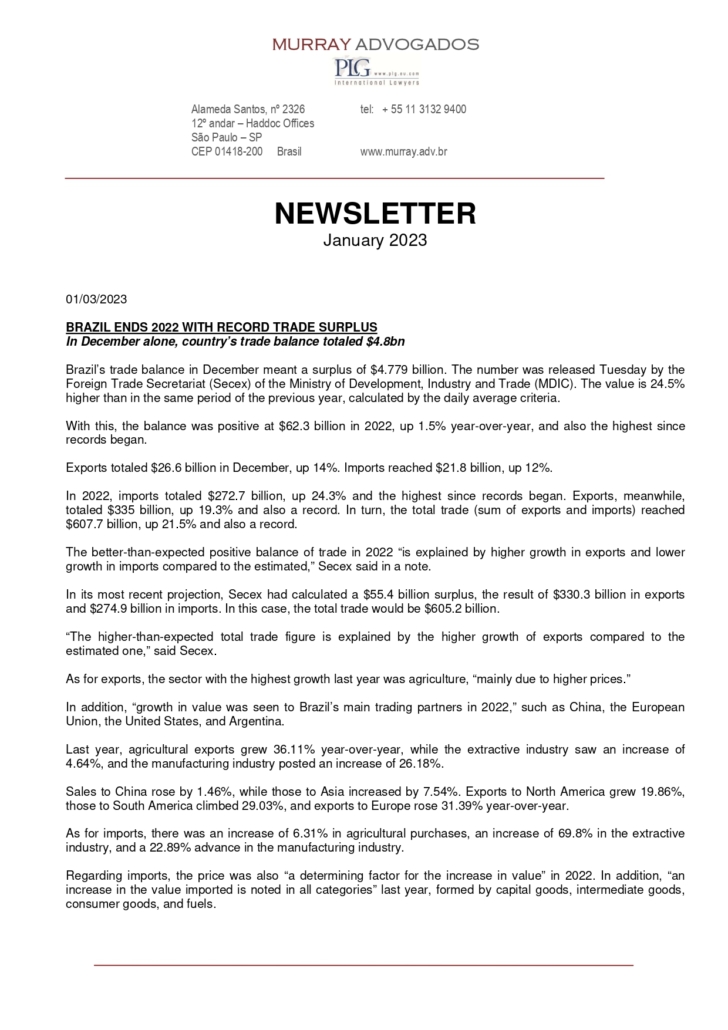
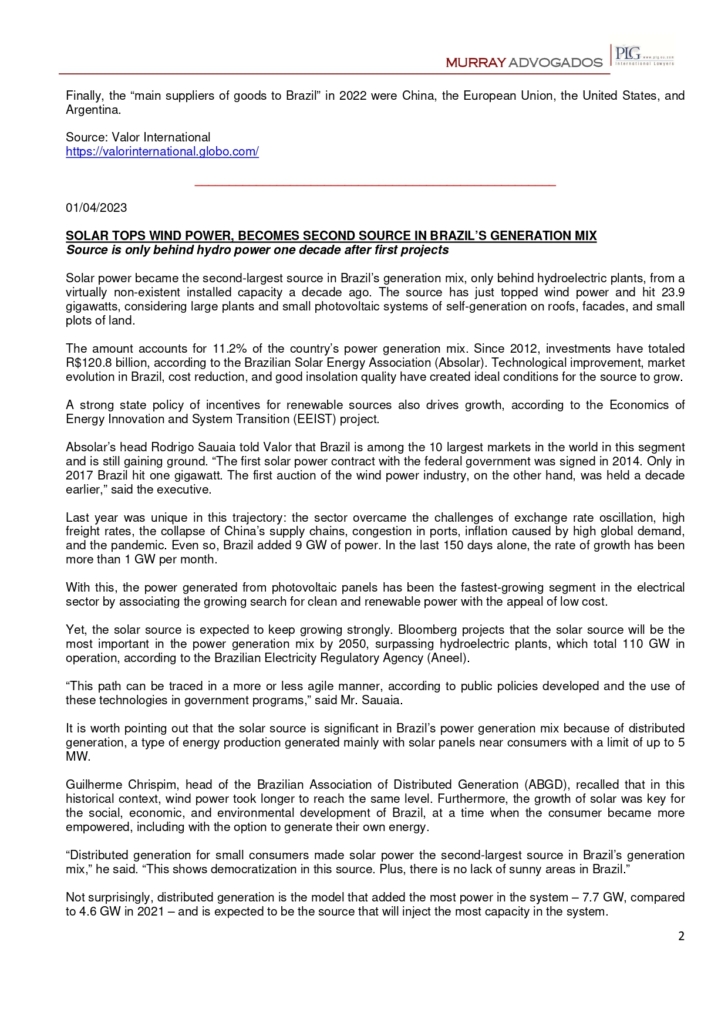
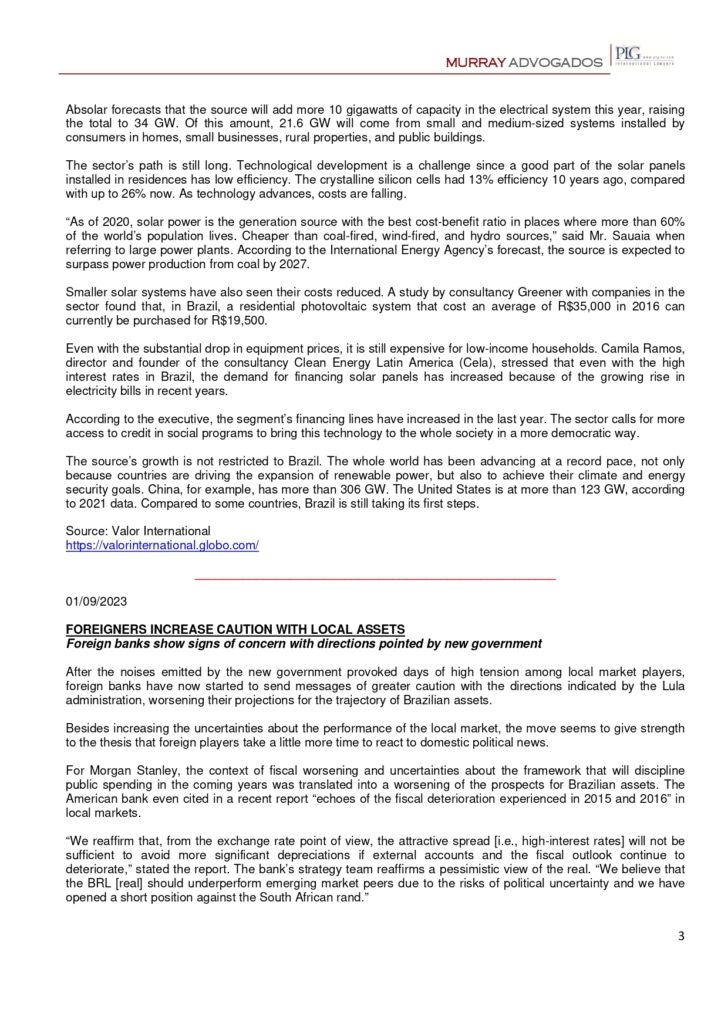
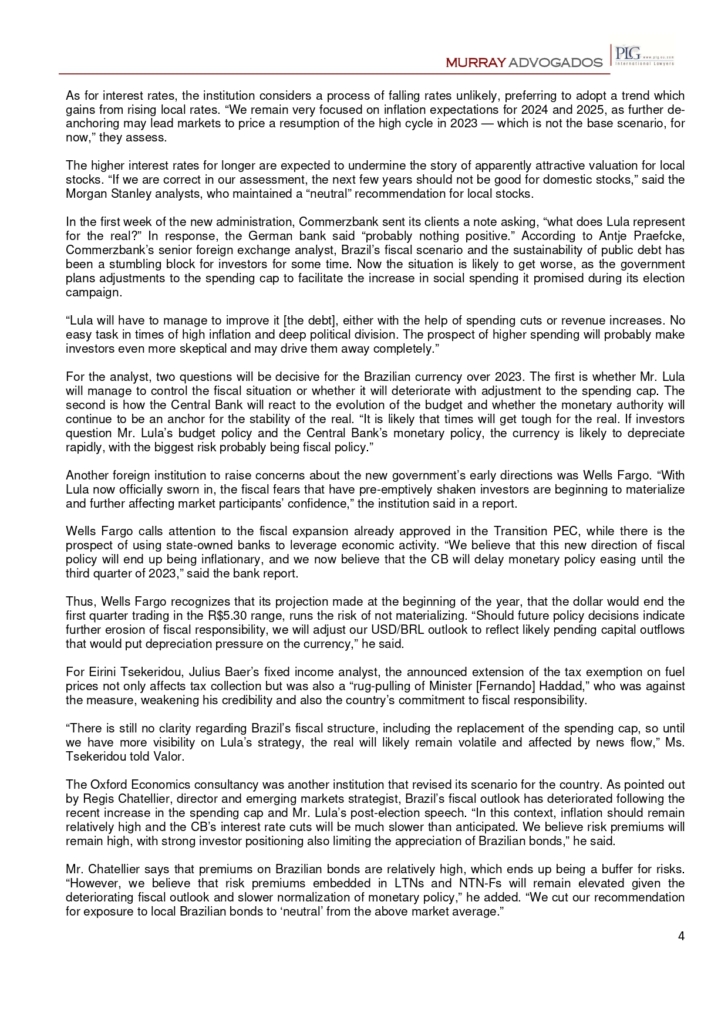
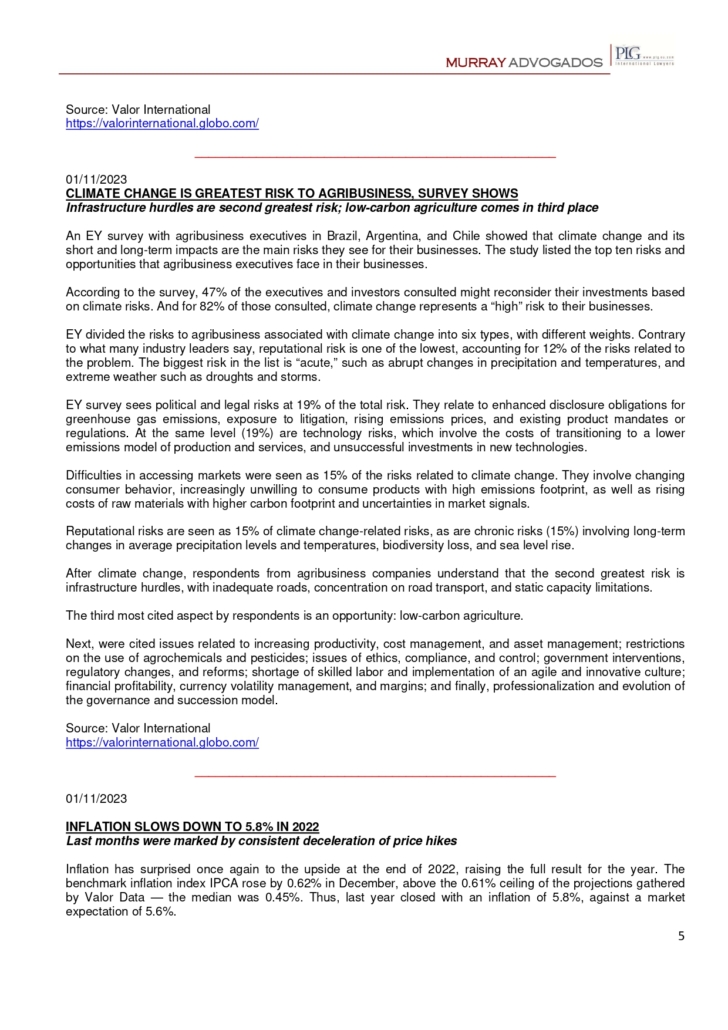
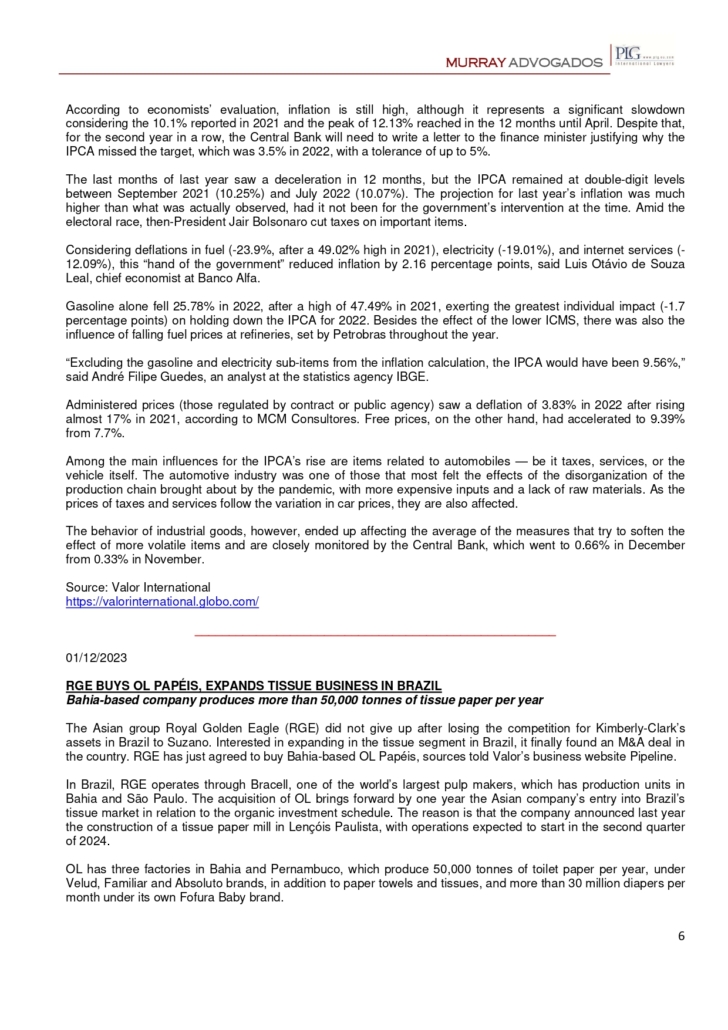
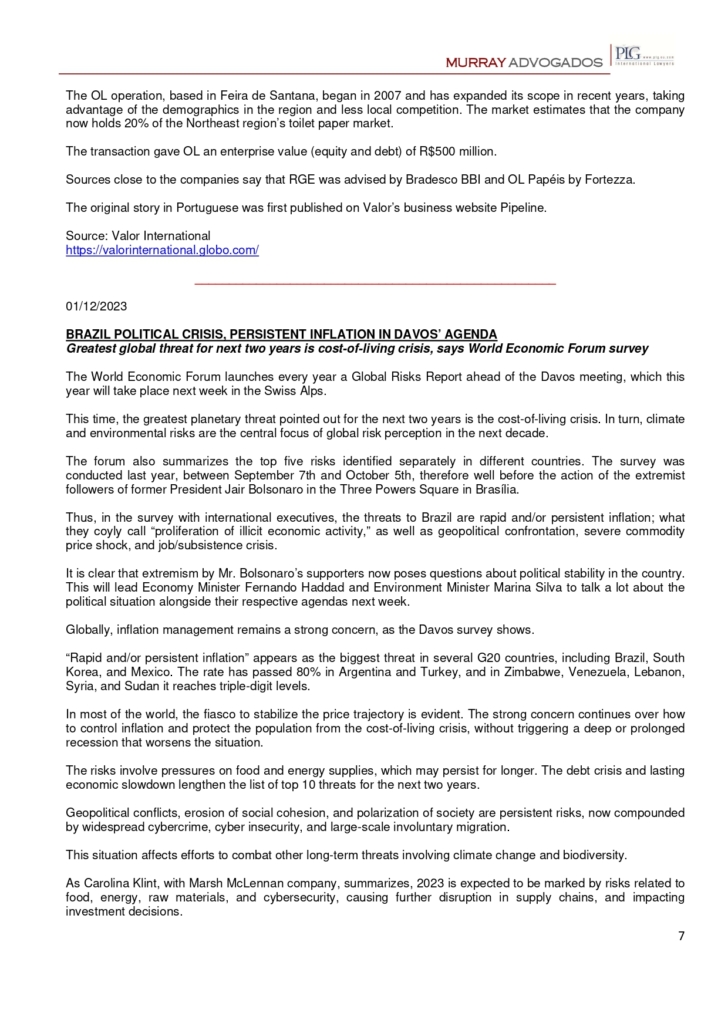
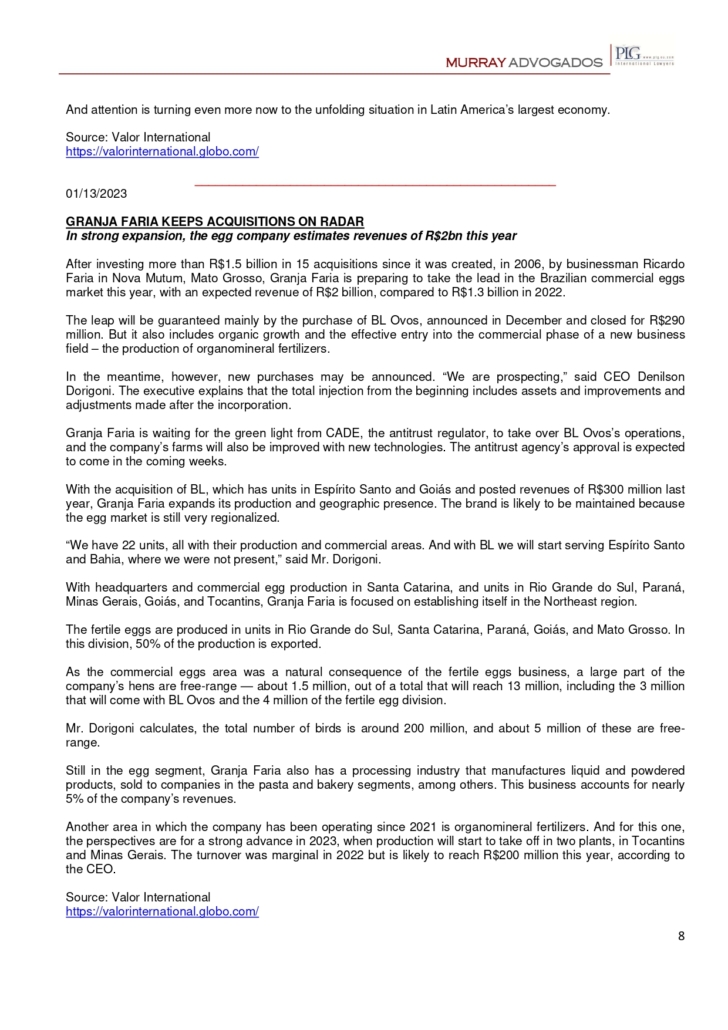
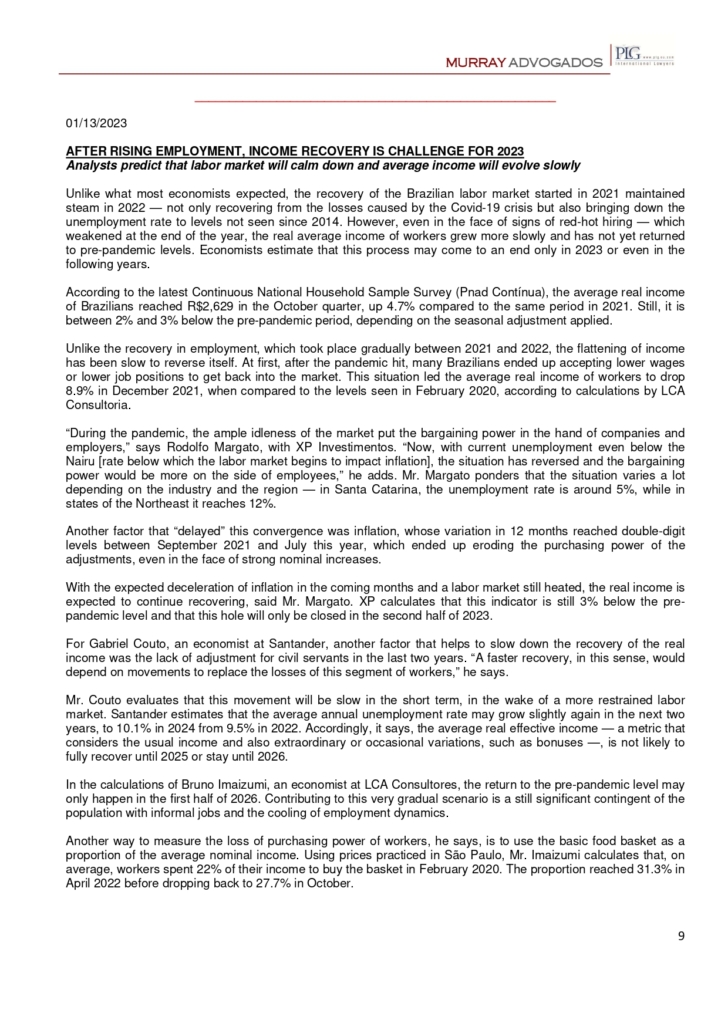
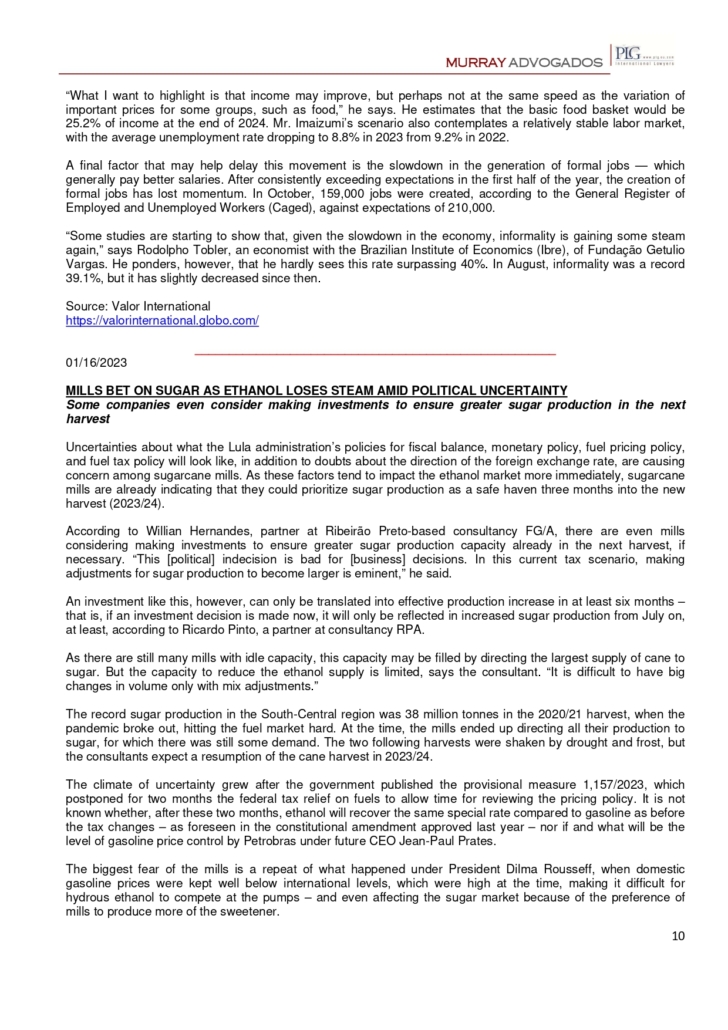
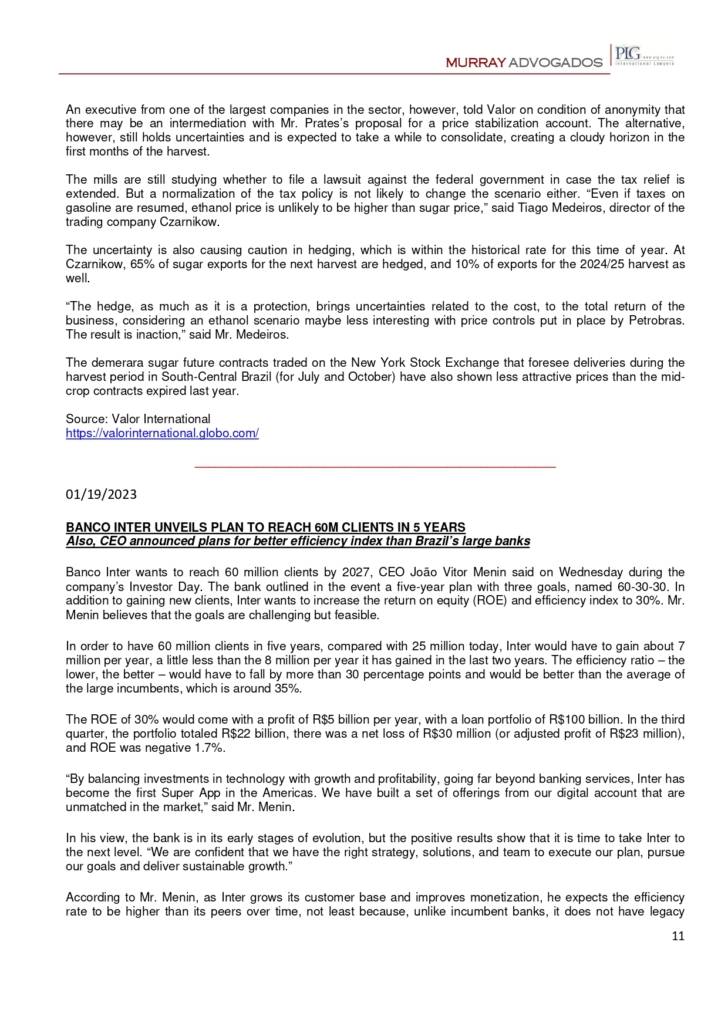
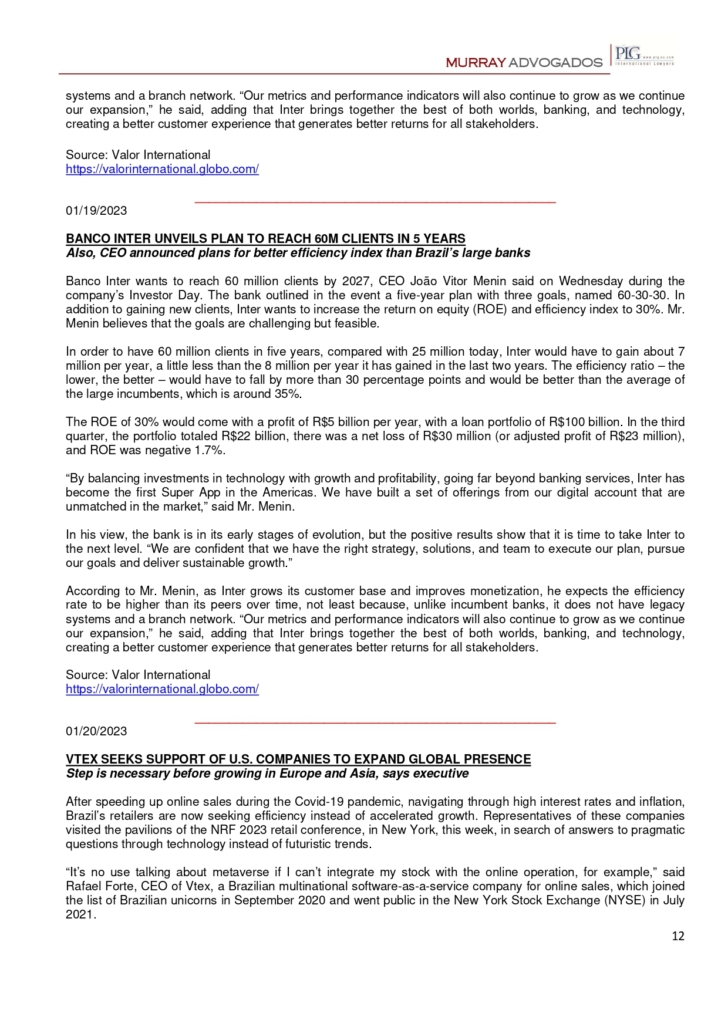
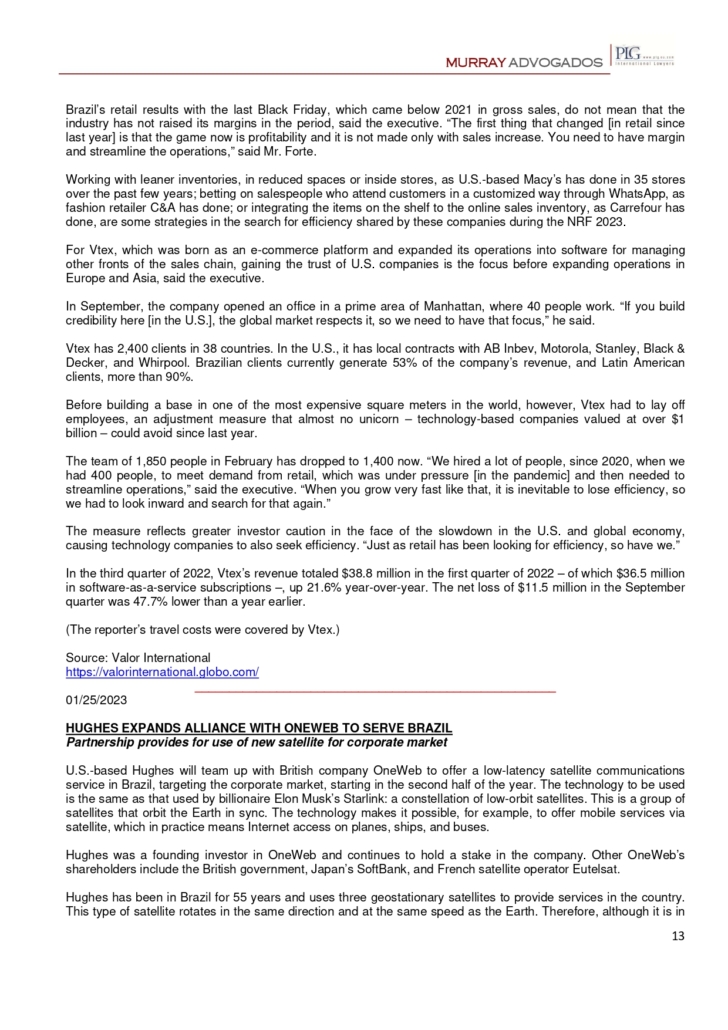
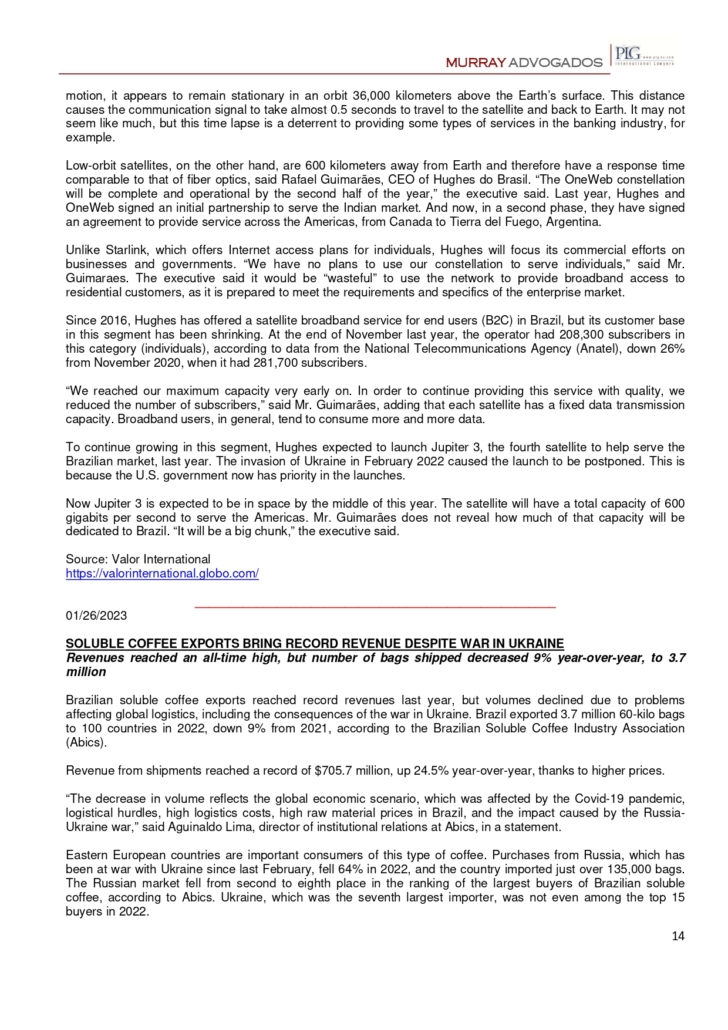
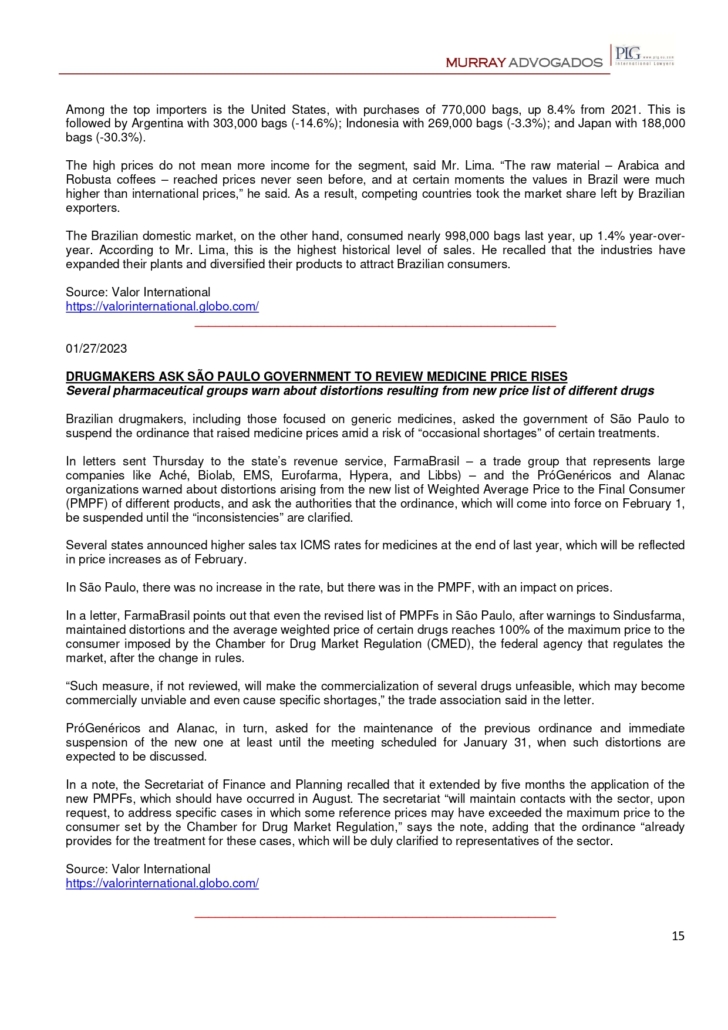
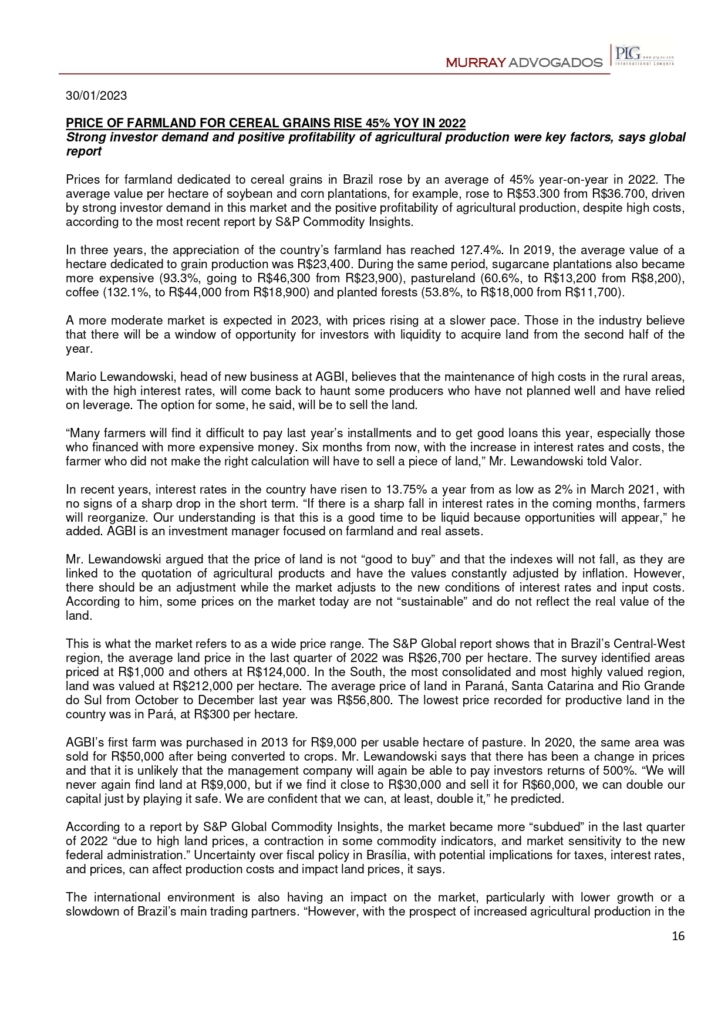
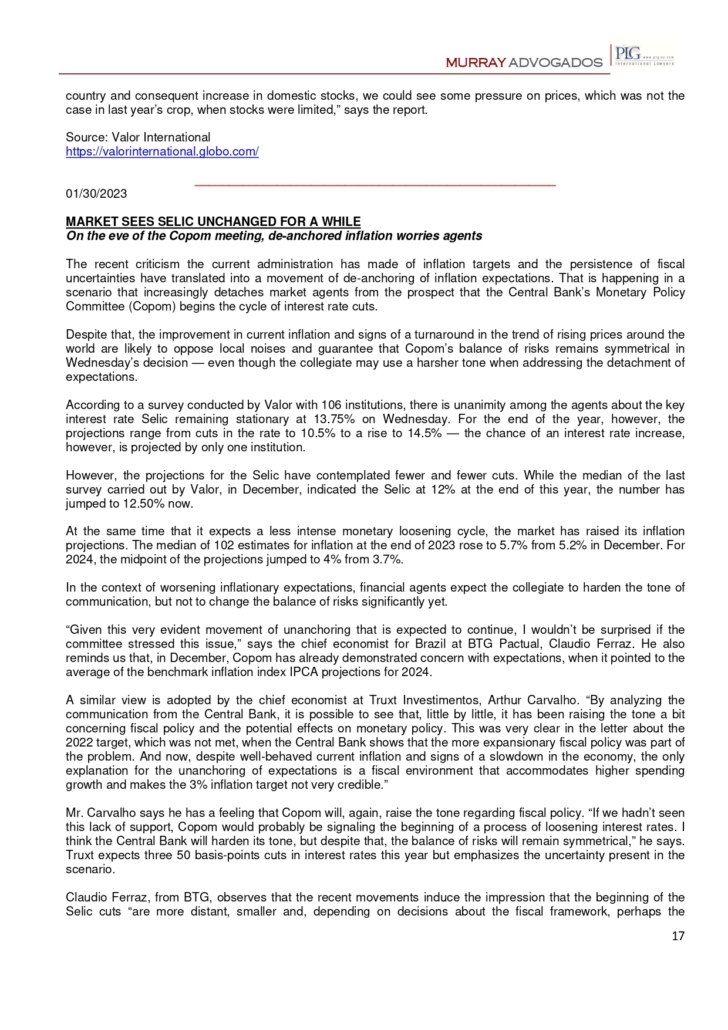
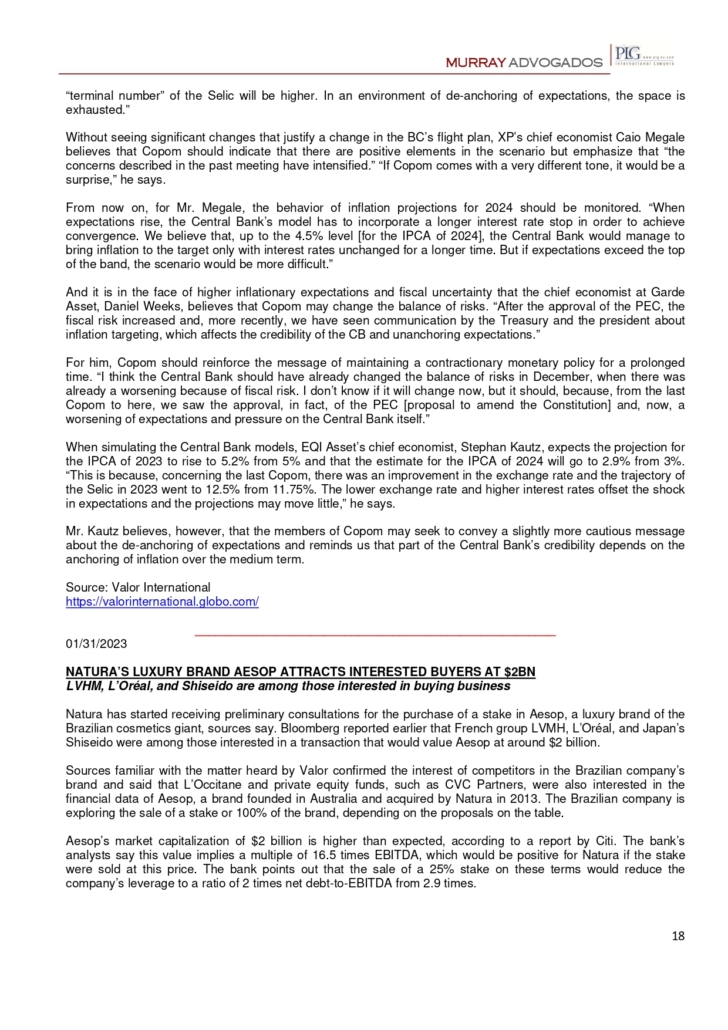
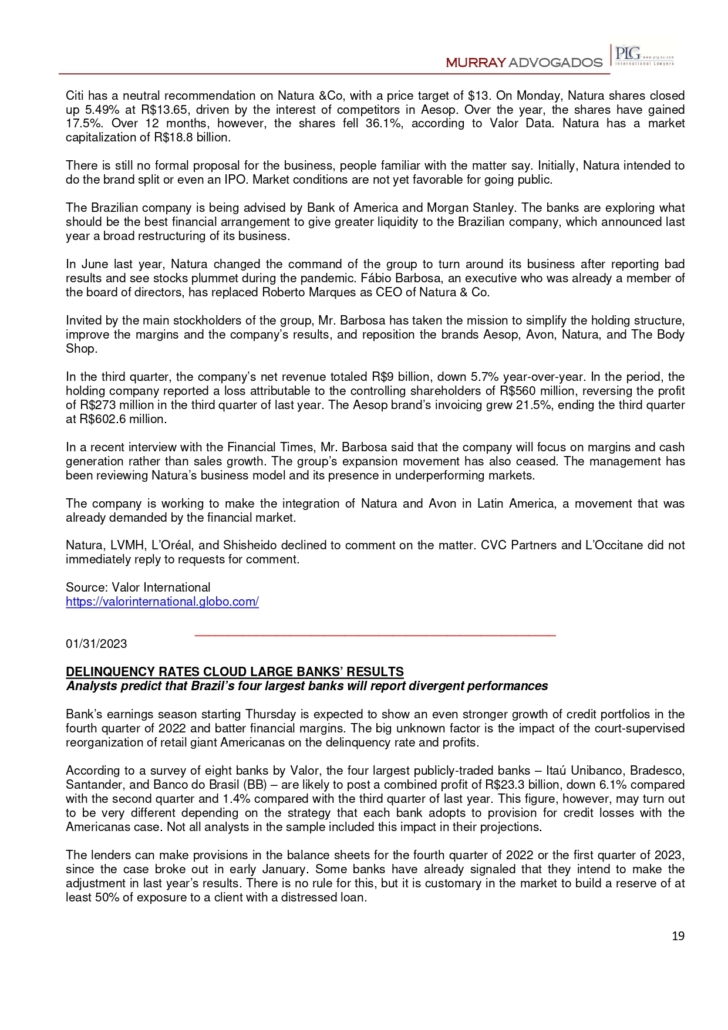
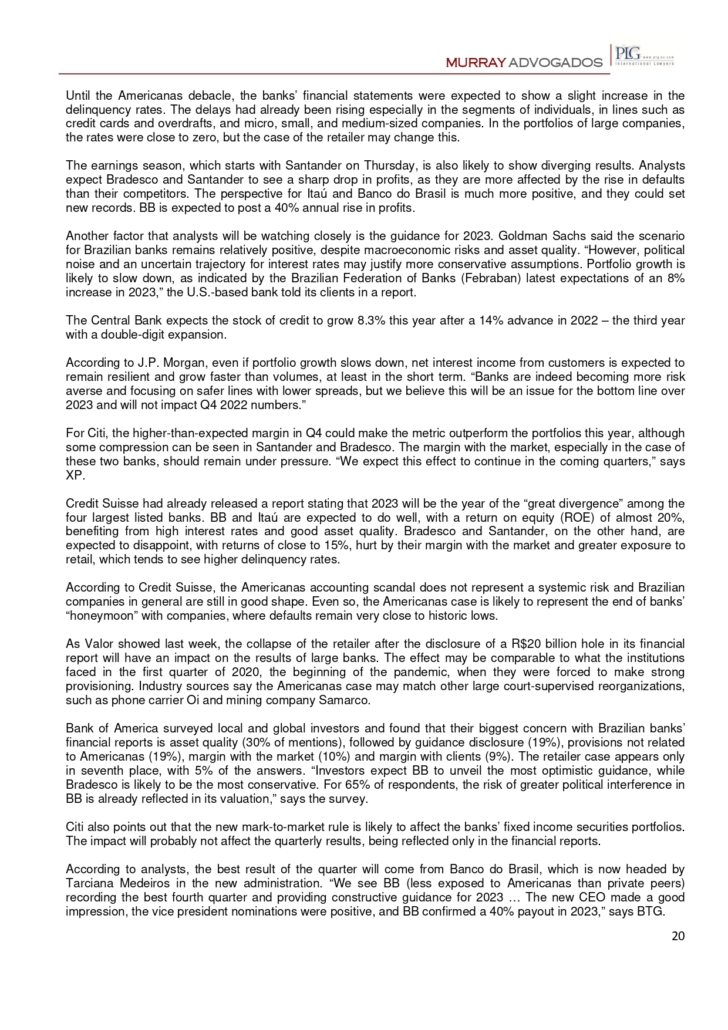
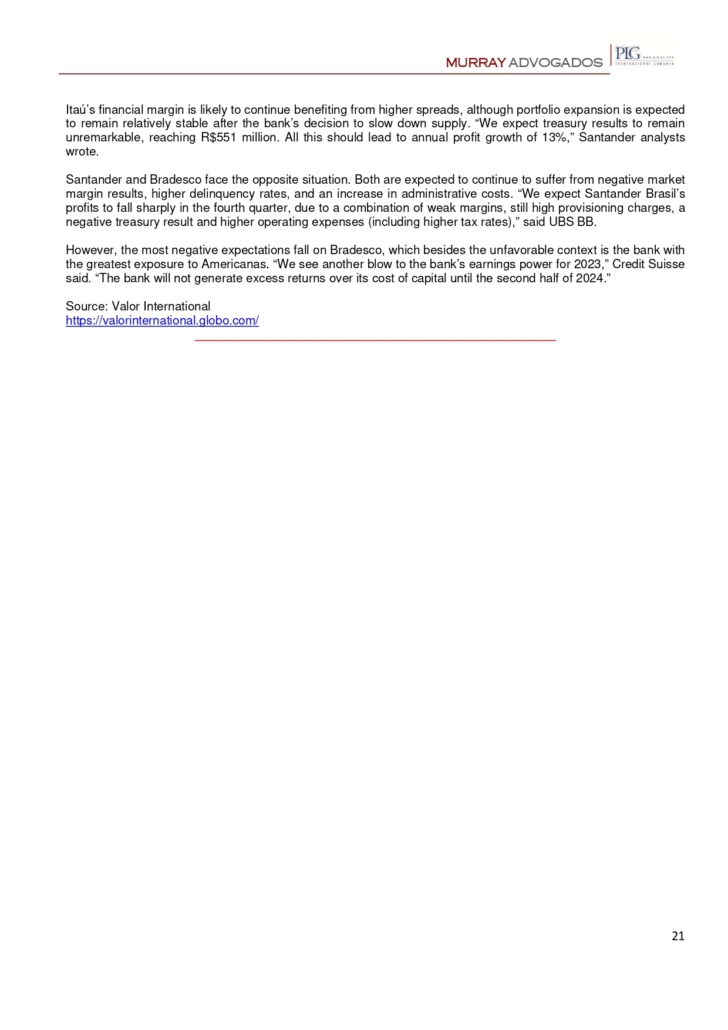
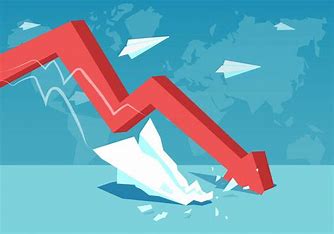
/i.s3.glbimg.com/v1/AUTH_37554604729d4b2f9f3eb9ad8a691345/internal_photos/bs/2023/9/H/GmSxLRSpaScEo6o2eImA/31emp-100-natura-b1-img01.jpg)
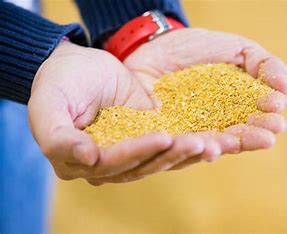
/i.s3.glbimg.com/v1/AUTH_37554604729d4b2f9f3eb9ad8a691345/internal_photos/bs/2023/2/0/MJlRO5R02qlX8H6ZAu7A/bc.jpg)
/i.s3.glbimg.com/v1/AUTH_37554604729d4b2f9f3eb9ad8a691345/internal_photos/bs/2022/K/O/J5MU4DRbAAX68TwAaXQQ/bancocentral.jpg)

/i.s3.glbimg.com/v1/AUTH_37554604729d4b2f9f3eb9ad8a691345/internal_photos/bs/2022/F/e/D0KyyMQ3S6GGjq1neEiA/screenshot-41.jpg)